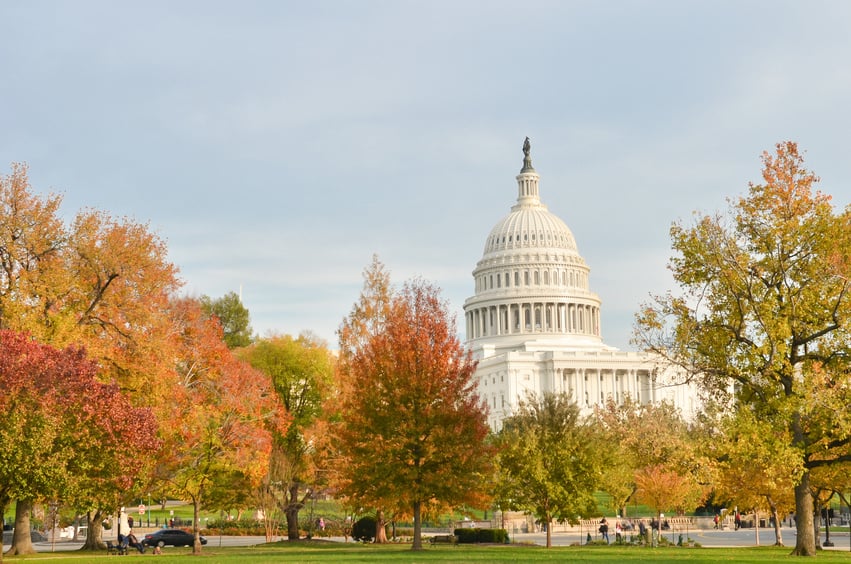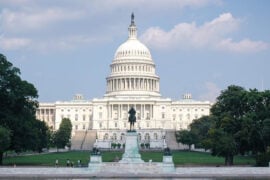In brief
The semiconductor shortage is increasingly obvious, from the automotive industry to consumer electronics. In fact, the chip shortage has even been referenced as a potential matter of national security. H.R. 4346, better known as the CHIPs and Science Act (“Act”), was signed into law by President Biden on 9 August, 2022 and seeks to promote semiconductor supply chain resilience by establishing incentives to increase the production of microchips and related devices, including through an effectively refundable tax credit, as well as through other measures. Semiconductor manufacturing companies and other companies that participate in semiconductor supply chains should consider how the Act applies to their business. We highlight a few key provisions here.
Advanced Manufacturing Investment Credit
Specifically, section 107 of the Act creates new Code Section 48D, which allows for a 25% investment tax credit, the “advanced manufacturing investment credit,” for investments in semiconductor manufacturing.
The credit for any taxable year is 25% of the qualified investment (which excludes basis of property attributable to qualified rehabilitation expenditures) for such year with respect to any advanced manufacturing facility (i.e., a facility for which the primary purpose is manufacturing semiconductors or semiconductor manufacturing equipment) of an eligible taxpayer. A qualified investment is the basis of any qualified property placed in service by the taxpayer during the taxable year that is part of an advanced manufacturing facility. Qualified property is property (i) that is tangible property; (ii) with respect to which depreciation (or amortization in lieu of depreciation) is allowable; (iii) which is either (A) constructed, reconstructed, or erected by the taxpayer or (B) acquired by the taxpayer if its original use commences with such taxpayer; and (iv) which is integral to the advanced manufacturing facility’s operation. Qualified property includes any building or its structural components otherwise meeting the qualified property criteria but specifically does not include buildings (or portions of buildings) used for offices, administrative services, or other functions unrelated to manufacturing.
To be eligible for the credit, the taxpayer cannot be a “foreign entity of concern” (as defined in section 9901(6) of the William M. (Mac) Thornberry National Defense Authorization Act for Fiscal Year 2021). Furthermore, the taxpayer cannot enter into a “significant transaction” that involves the material expansion of the taxpayer’s semiconductor manufacturing capacity in the People’s Republic of China or other foreign countries of concern in the taxable year in which property that would otherwise be eligible for the credit is placed into service.
Additionally, instead of taking the full 25% tax credit into account in the year in which the property is placed in service, section 48D permits the application of the qualified progress expenditure rules in section 46(c)(4) and section 46(d) (as in effect the day before the date of enactment of the Revenue Reconciliation Act of 1990). As a practical matter, these rules allow taxpayers to accelerate claiming the 25% credit where the normal construction period exceeds two years and it is reasonable to believe that the taxpayer constructing the property will be the taxpayer placing the property in service.
Generally, taxpayers can make an election to treat the credit allowed in any tax year as a payment against tax. The election, which is irrevocable, must be made no later than the due date (including extensions) for the tax return for the year for which the election is made but in no event earlier than 270 days after the Act’s enactment. If a taxpayer makes the election, it is not eligible for a double benefit by also claiming the credit for the applicable year. If the election is made and the credit is treated as a payment against tax, the taxpayer making the election would be eligible to receive a refund if such payment exceeds its actual tax liability for the applicable year. For property held directly by partnerships and S corporations, the election to treat the credit as a payment against tax is made at the entity level even though partnerships and S corporations are not directly liable for tax. If the election is made by a partnership or S corporation, the IRS will make a payment to the entity equal to the amount of the credit, which will be treated as tax exempt income, and each partner’s or S corporation shareholder’s allocable share of such tax exempt income will be equal to the partner’s or S corporation shareholder’s allocable share of the credit, had the entity claimed a credit instead of making the election. If the IRS subsequently determines that there was an excess payment (because the amount treated as payment against tax exceeds the otherwise allowable credit amount for the applicable tax year), the tax imposed on the taxpayer for the applicable taxable year will be increased by the amount of the excessive payment, plus a penalty equal to 20% of the excess payment unless the taxpayer demonstrates that it had reasonable cause for claiming the excess payment.
The advanced manufacturing investment credit applies to property placed in service after 31 December 2022, and, if construction of any such property begins prior to 1 January 2023, only to the extent of basis attributable to the construction, reconstruction, or erection after the date of the Act’s enactment (which is 9 August 2022). Additionally, the credit only applies to property the construction of which begins on or before 31 December 2026.
The rules of section 50, which apply to other investment tax credits, also apply to the section 48D credit and to any payment received in lieu of the credit if the refund election is made. These rules provide that a ratable portion of the credit is subject to recapture if the property with respect to which the credit was claimed ceases to be eligible property in the hands of the taxpayer or if the taxpayer that claimed the credit disposes of that property, in each case within five years of the date on which the property is placed in service. If a portion of the credit is subject to recapture, the taxpayer must increase its tax liability by the amount subject to recapture for the tax year in which the recapture event occurs. Additionally, the depreciable or amortizable tax basis of any property with respect to which the credit is claimed or a refund payment is received must be reduced by the amount of the credit (or payment).
The Act also adds a special recapture provision that applies only to the “advanced manufacturing investment tax credit” but not to other investment tax credits. It provides that, if a taxpayer places into service property with respect to which it claims a section 48D advanced manufacturing investment tax credit or receives a refund payment in lieu of such credit and within a ten-year period of any such property being placed in service, the taxpayer enters into a “significant transaction” that involves the material expansion of the taxpayer’s semiconductor manufacturing capacity in the People’s Republic of China or any “foreign country of concern” (as defined in section 9901(7) of the William M. (Mac) Thornberry National Defense Authorization Act for Fiscal Year 2021), the taxpayer must recapture 100% of the amount of such tax credit or payment in lieu. However, a transaction that involves the expansion of a taxpayer’s manufacturing capacity for “legacy semiconductors” (as defined in section 9902(a)(6) of the William M. (Mac) Thornberry National Defense Authorization Act for Fiscal Year 2021) is excepted from this recapture rule.
Regulatory Guidance Required
The legislation includes explicit grants of regulatory authority, pursuant to which Treasury and the IRS are directed to issue regulations or other guidance to carry out the purposes of the newly-enacted provisions discussed above, including rules for determining a partner’s or S-corporation shareholder’s allocable share of the tax-exempt income attributable to a refund payment in lieu of the credit, guidance to ensure that the amount of such payment in lieu is commensurate with the amount of the credit that would otherwise be allowable, and guidance clarifying what constitutes a prohibited expansion of semiconductor manufacturing capacity in the People’s Republic of China and other foreign countries of concern. We believe it is likely that Treasury and the IRS will issue regulations providing additional guidance to ensure that taxpayers investing with the intent of qualifying for the credit are able to do so.
The Act is an encouraging step in resolving the chip shortage on the global supply chain. There are, however, several statutory ambiguities in the Act that the IRS may need to clarify to provide more certainty to taxpayers ready and willing to make the significant financial investments that Congress intended to incentivize by enacting section 48D. First, the IRS may provide guidance on the definition of “primary purpose” when defining an advanced manufacturing facility. To provide certainty to taxpayers throughout the construction process, the IRS may consider providing a safe harbor for what constitutes “primary purpose.” Second, the IRS may issue guidance defining what is “integral” to an advanced manufacturing facility’s operation. It would be beneficial for industry experts to provide industry-specific information, such as a list of activities that should qualify as “integral,” for the IRS to consider when drafting such guidance. Third, the IRS may also consider issuing guidance on the treatment of mixed-use property. In particular, it would be helpful if such guidance (i) confirms that this will not be an “all or nothing” determination and (ii) describes the method that taxpayers should use for apportioning the amount of mixed-use property that will be qualified property. Fourth, the IRS may provide guidance on facilities that are already in the process of being constructed to help taxpayers determine what portion of the basis should be allocated to the period prior to the Act’s enactment versus the remaining basis that should be allocated to the post-enactment period (and would thus be eligible for the credit). Finally, the IRS can provide guidance on what activities constitute beginning of construction, as it has in the renewable energy area, to provide taxpayers with a safe harbor that is tailored to manufacturing facilities. While taxpayers have several years before which construction must begin to qualify for the credit, the types of manufacturing facilities that are eligible for the credit generally require advanced planning and regulatory approvals. Taxpayers may need to know what activities they need to take to be deemed to have begun the construction of an eligible manufacturing facility prior to taking even preliminary construction steps.
Federal Government Procurement Policy Changes to Promote Domestic Manufacturing
The Act also includes several changes with respect to federal government procurement policy. Specifically, the Act requires agency heads to establish policies to promote the domestic production of technologies developed by the Manufacturing USA Network, a network of research institutes that develops manufacturing technologies through public-private partnerships. These policies will include:
- Measures to partner domestic developers of goods, services, or technologies with domestic manufacturers and financing
- Incentives to promote the transfer of intellectual property and goods, services, or technologies developed by Manufacturing USA Network activities to domestic manufacturers
- Measures to prioritize federal procurement of goods, services, or technologies developed by the Manufacturing USA Network activities from domestic sources;
- Measures to assist with supplier scouting and other supply chain development (including through the use of a national network of centers to provide custom services to small and medium-sized manufacturers to improve production processes, upgrade technological capabilities, and facilitate product innovation through the Hollings Manufacturing Extension Partnership)
- Process to review and approve or deny membership in a Manufacturing USA institute by foreign-owned entities, especially from foreign countries of concern, including the People’s Republic of China.
No Trade Measures in the Act
Earlier versions of this legislation that the House and Senate had each passed and begun conference negotiations on in recent months took more of a “carrot and stick” approach, with several trade measures acting as the “sticks” to supplement the tax incentive “carrots.” However, these trade measures were excluded from the Act.
Specifically, the larger economic competitiveness bills, the Senate’s U.S. Innovation and Competition Act (USICA) (S. 1260) and House’s America Creating Opportunities to Meaningfully Promote Excellence in Technology, Education and Science (COMPETES Act) (H.R. 4521), each contained key trade and foreign policy provisions. However, with the chambers at an impasse on these issues, they were removed from the Act. As a result, the currently expired Trade Adjustment Assistance, Miscellaneous Tariff Bill, and Generalized System of Preferences programs were left out for future negotiation in a separate legislative vehicle. In addition, products from the People’s Republic of China that are subject to additional tariffs under section 301 of the Trade Act of 1974 and that previously benefited from an expired tariff exclusion will continue to be subject to additional tariffs. Further, new proposals to remove de minimis tariff treatment for products coming from certain countries and to screen outbound investments will not become law as part of this Act. Finally, export control provisions were left out of the Act, such as a statement of policy to use export control measures to protect human rights.




